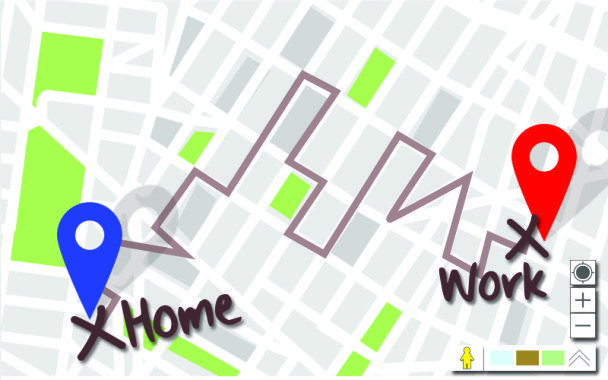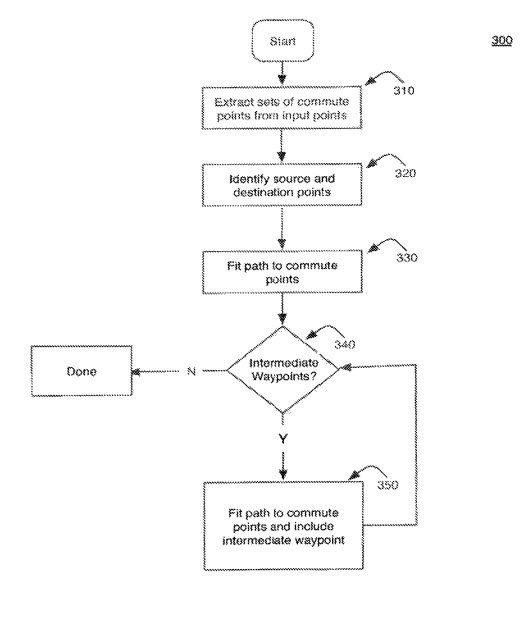A Google patent granted this week describes some aspects of Google Maps that we could see in the future. It tells us about how it tracks a person’s location history, and could potentially offer services based upon those location histories. The Times of India ran a story this week, telling people about The one Google Maps feature every user should be using.
Related Content:
That feature is labeling your home and your workplace in Google Maps. The patent describes how Google Maps might try to figure out those locations on its own, based upon analyzing user’s location histories. The Mapping system could propose a route between the home and work destination points after it has identified those locations. The patent points out some other possible benefits from understanding the routes a driver often takes. These include such things as:
- Carpool matching – Helping people with similar routes to connect and carpool together
- Location-Based Reminders – people could set these themselves, such as “drop off dry-cleaning” or “pick up milk”
- Recommendations for businesses – these may be interesting or useful to the user
- Special events may trigger alerts – like a sale being held at a place that the driver often visits
The patent provides more details on how it clusters information about routes and may provide other services as well. It is:
Extracting patterns from location history
Inventors: Andrew Kirmse, Tushar Udeshi, Pablo Bellver, James Jeffrey Shuma, Matthieu Devin
Assigned to: Google
US Patent 9,310,211
Granted April 12, 2016
Filed: August 29, 2014
Abstract
Embodiments relate to determining commute routes and clustering commute routes from a user’s location history. Points in the user’s location history may be clustered to find the user’s home and work locations. Additionally, points along the user’s commute may be identified to determine the user’s typical commute. Similar commutes can be clustered together and used to suggest various services to the user.
Takeaways
The additional services the patent points out aren’t available now, but they could be in the future. We should expect more people using mobile devices that search engines will provide services based upon smartphones and providing navigation. To achieve benefits from these future changes, Google Maps could require having Google know more about your business. Google recently updated the information that they show off that talks about ranking well in Google Maps results, and that could potentially help your business show up for recommendations based upon the location of your business. That Google Help article is:
Improve your local ranking on Google
We’ve worked with clients to help them rank better in Google Maps results, and if customers visit your business in person, it can be worth making the effort to make sure your business appears in Google Maps. If Google starts suggesting businesses for people to visit, it may lead to new customers being directed to your business.
Google has also developed a way for businesses to show off events in Google search results using rich snippets, and there is a possibility that the events referred to in this patent could be the kind of thing such schema markup might help to alert users of Google Maps about. We won’t know for certain until Google start’s promoting this more, but it’s worth looking at the information that Google has published on Enabling Rich Snippets for Events. Knowing how to have such rich snippets show up in search results for your business if you do hold events at your business, may make those events more successful.
Search News Straight To Your Inbox
*Required
Join thousands of marketers to get the best search news in under 5 minutes. Get resources, tips and more with The Splash newsletter:

